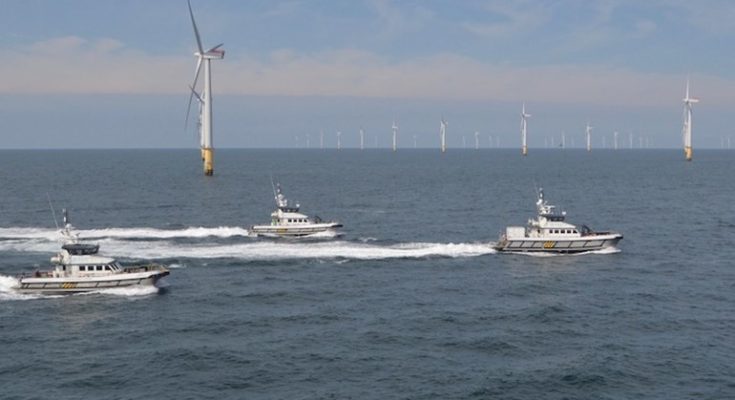CTV operator has committed to the measurement and analysis of its baseline CO2 footprint [Image: Seacat Services]
Seacat Services has adopted the Carbon Management Plan, an emissions reduction strategy introduced by new maritime sustainability consultancy, Cedar Marine.
In joining Cedar Marine’s pioneering carbon reduction initiative, Seacat said it is calling on the renewable and offshore support industries to “hold themselves to higher standards” and recognise the importance of driving down their environmental impact to better facilitate a sustainable energy transition.
The offshore wind sector has “suffered scepticism” in recent weeks around the environmental performance of its supply chain and support networks, said Seacat.
This includes high emissions levels generated by supporting fleets of offshore energy support vessels (OESVs), which may lead to question marks over the effectiveness of the wind sector as a true zero-carbon energy solution.
“As a cornerstone of global efforts to reduce energy emissions, it is crucial for the future viability of offshore wind that its own operational emissions profile is controlled and improved,” Seacat said.
The Carbon Management Plan enables organisations to monitor their performance and commit to comply with developing industry and regulatory standards for decarbonisation, as well as pursue their own sustainable goals, while also maintaining commercial success and operational efficiency.
In signing up to the Carbon Management Plan, Seacat has committed to the measurement and analysis of its baseline carbon footprint, the generation of a dedicated Carbon Management Plan, progress tracking and quarterly data reporting against its goals and an annual review of its Carbon Management Plan based on its progress.
In practice, the Plan requires Seacat to commit to a “sustained period of operational change, R&D, and significant investments” to bring down its emissions.
Seacat has already begun to fulfil these commitments through a number of initiatives, such as using alternative fuelling solutions for its fleet.
The company recently fuelled its CTV Seacat Enterprise with HVO30 for its return journey and first operational days at Triton Knoll Offshore Wind Farm, reducing the vessel’s CO2 footprint.





